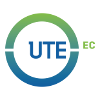Vertical Integration in factories using OPC-UA and IEC-61499
DOI:
https://doi.org/10.29019/enfoqueute.v8n1.132Keywords:
Cyber-Physical Production Systems (CPPS), Industry 4.0, OPC-UA, Modbus/TCP.Abstract
Nowadays, factory automation systems need to cope with very different challenges, such as big data, IIoT, etc. These challenges lead to a new generation of automation systems based on the so-called Cyber-Physical Production Systems (CPPS) globally connected to form a flexible System of Cyber-Physical Production Systems (SoCPPS). CPPSs require acquisition of production system data and smart data processing to extract information to improve the overall system performance. To achieve that it is needed to bridge the gap between the control systems and higher layers. This paper discusses an approach to use the IEC 61499 function block concept to exchange data between plant floor and higher layers using an industrial standard like OPC UA. The OPC UA server offers subscription mechanisms, making possible the integration of several resources residing at plant floor. As it runs on embedded devices, the proposal makes possible to acquire plant information at low cost, enabling at the same time, a component-based design for enterprise plant floor control with independence of the hardware platform used
Downloads
References
Dai, W., & Chen, C. (2015). Modeling Distributed Automation Systems in Cyber- Physical View, 984–989.
Ferrarini, L., Veber, C., & Fogliazza, G. (n.d.). IEC 61499 implementation of a Modular Control Model for Manufacturing Systems. In 2005 IEEE Conference on Emerging Technologies and Factory Automation (Vol. 1, pp. 315–321). IEEE. http://doi.org/10.1109/ETFA.2005.1612540
Ferrarini, L., Veber, C., & Milano, P. (2005). Design and implementation of distributed hierarchical automation and control systems with IEC 61499. I Can, 0–5.
GmbH, 4DIAC Consortium. PROFACTOR. (2010). Framework for Distributed Industrial Automation and Control (4DIAC). Retrieved from http://www.fordiac.org
J.H.Christensen. (2000). Design patterns for systems engineering in IEC 61499. In Verteilte Automatisierung - Modelle und Methoden für Entwurf, Verifikation, Engineering und Instrumentierung (pp. 63–71). Germany.
Jazdi, N. (2014). Cyber physical systems in the context of Industry 4.0. Automation, Quality and Testing, Robotics, 2014 IEEE …, 2–4. http://doi.org/10.1109/AQTR.2014.6857843
Kang, W., Kapitanova, K., & Son, S. (2012). RDDS: A real-time data distribution service for cyber-physical systems. IEEE Transactions on Industrial Informatics, 8(2), 393–405. http://doi.org/10.1109/TII.2012.2183878
Kim, J., Lee, J., Kim, J., & Yun, J. (2014). M2M service platforms: Survey, issues, and enabling technologies. IEEE Communications Surveys and Tutorials, 16(1), 61–76. http://doi.org/10.1109/SURV.2013.100713.00203
Lee, J., Bagheri, B., & Kao, H.-A. (2014). Recent Advances and Trends of Cyber-Physical Systems and Big Data Analytics in Industrial Informatics. Int. Conference on Industrial Informatics (INDIN) 2014, (November 2015). http://doi.org/10.13140/2.1.1464.1920
Lee, J., Lapira, E., Bagheri, B., & Kao, H. an. (2013). Recent advances and trends in predictive manufacturing systems in big data environment. Manufacturing Letters, 1(1), 38–41. http://doi.org/10.1016/j.mfglet.2013.09.005
Scheuermann, C., Verclas, S., & Bruegge, B. (2015). Agile Factory - An Example of an Industry 4.0 Manufacturing Process. 3rd IEEE International Conference on Cyber-Physical Systems, Networks and Publications, 2008, 5. http://doi.org/10.1109/CPSNA.2015.17
Stojmenovic, I. (2014). Machine-to-Machine Communications with In-network Data Aggregation, Processing and Actuation for Large Scale Cyber-Physical Systems. IEEE Internet of Things Journal, PP(99), 1–1. http://doi.org/10.1109/JIOT.2014.2311693
Takahashi, K., Yokoyama, K., & Morikawa, K. (n.d.). Integrating Lean and Agile Strategies into the Production Control System for Mixed- model Production Lines, 246, 405–412.
Thramboulidis, K. (2005). Model-Integrated Mechatronics—Toward a New Paradigm in the Development of Manufacturing Systems. IEEE Transactions on Industrial Informatics, 1(1), 54–61. http://doi.org/10.1109/TII.2005.844427
Thramboulidis, K. (2009). IEC 61499 function block model: Facts and fallacies. IEEE Industrial Electronics Magazine, 3(4), 7–23. http://doi.org/10.1109/MIE.2009.934788
Van Der Linden, D., Mannaert, H., Kastner, W., Vanderputten, V., Peremans, H., & Verelst, J. (2011). An OPC UA interface for an evolvable ISA88 control module. IEEE International Conference on Emerging Technologies and Factory Automation, ETFA. http://doi.org/10.1109/ETFA.2011.6058978
Vicaire, P. A., Hoque, E., Member, S., Xie, Z., & Stankovic, J. A. (2012). Bundle : A Group-Based Programming Abstraction for Cyber-Physical Systems, 8(2), 379–392. http://doi.org/10.1109/TII.2011.2166772
Windt, K., Böse, F., & Philipp, T. (2008). Autonomy in production logistics: Identification, characterisation and application. Robotics and Computer-Integrated Manufacturing, 24(4), 572–578. http://doi.org/10.1016/j.rcim.2007.07.008
Published
How to Cite
Issue
Section
License
The articles and research published by the UTE University are carried out under the Open Access regime in electronic format. This means that all content is freely available without charge to the user or his/her institution. Users are allowed to read, download, copy, distribute, print, search, or link to the full texts of the articles, or use them for any other lawful purpose, without asking prior permission from the publisher or the author. This is in accordance with the BOAI definition of open access. By submitting an article to any of the scientific journals of the UTE University, the author or authors accept these conditions.
The UTE applies the Creative Commons Attribution (CC-BY) license to articles in its scientific journals. Under this open access license, as an author you agree that anyone may reuse your article in whole or in part for any purpose, free of charge, including commercial purposes. Anyone can copy, distribute or reuse the content as long as the author and original source are correctly cited. This facilitates freedom of reuse and also ensures that content can be extracted without barriers for research needs.
This work is licensed under a Creative Commons Attribution 3.0 International (CC BY 3.0).
The Enfoque UTE journal guarantees and declares that authors always retain all copyrights and full publishing rights without restrictions [© The Author(s)]. Acknowledgment (BY): Any exploitation of the work is allowed, including a commercial purpose, as well as the creation of derivative works, the distribution of which is also allowed without any restriction.























 Enfoque UTE - Facultad de Ciencias de la Ingeniería e Industrias - Universidad UTE
Enfoque UTE - Facultad de Ciencias de la Ingeniería e Industrias - Universidad UTE